Encounter Contemporary Art at Itamuro Onsen Daikokuya
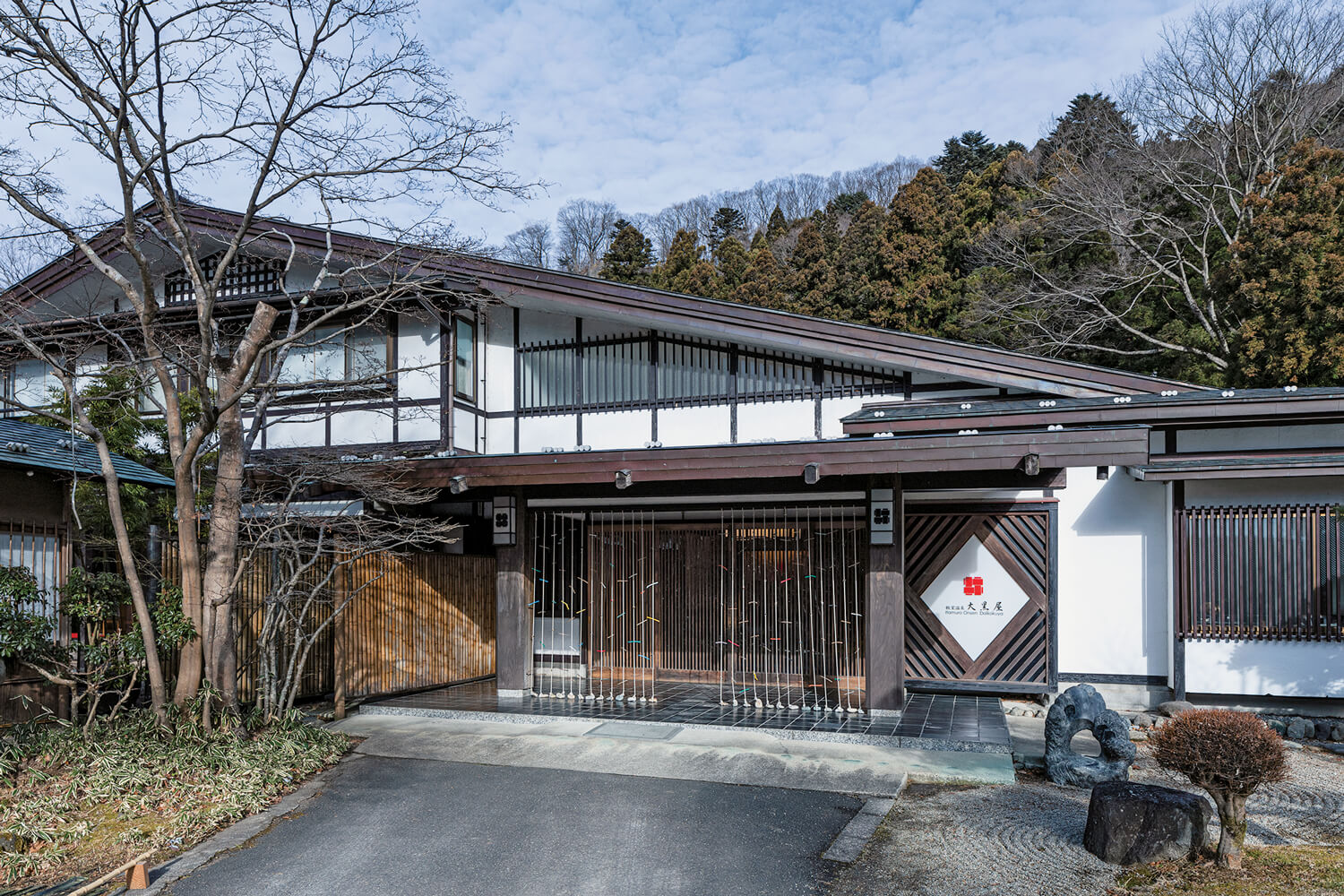
With the Naka River right before one’s eyes, Daikokuya stands with Mt. Nasu in the background. Since 2014, Suga Kishio’s art piece ‘Koufuu’ has been used instead of a curtain, and so guests spending the night are greeted by art.
Itamuro Onsen is a well-known hot spring located deep at the southern foot of Mt. Nasu in Nikko National Park. Daikokuya is a traditional inn that has been operating since 1551 in a quiet hot spring area with about 10 hot spring inns. Contemporary art decorates this historic inn as well as the hot springs themselves.
Daikokuya has displayed works by contemporary artists both indoors and outdoors since the late 1980s, with a focus on Kishio Suga, an artist who represents the ‘mono-ha’, a major movement in post-war Japanese art that has been reevaluated in recent years. Mono-ha refers to a group of artists who present natural objects such as wood and stones, and neutral materials such as paper and metal, in their almost completely raw state, exploring the relationship of ‘things’ and shaping out the sights that are created from there.
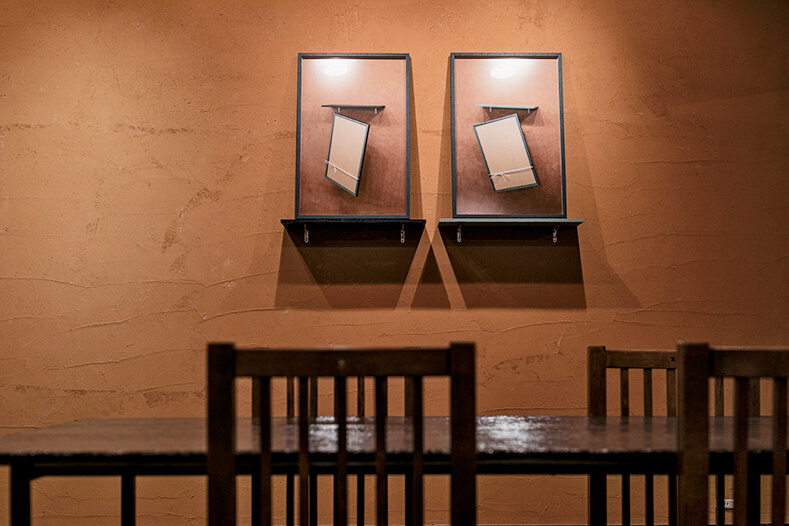
On the walls of the reception room are artworks by Hirofumi Isoya, a key figure in the art world known for his works that use carvings and photographs.
‘A ryokan (Japanese traditional inn) has always been a place that we decorate with Japanese paintings, to incorporate art into the culture of our everyday life. However, if we do so, we cannot differentiate ourselves from other inns. I picked up works of contemporary artists that have yet to be appraised, and began to deeply explore new possibilities. I think that Mono-ha artists have the power to change the world. Among them is Mr. Suga, an artist who can express the philosophy of thought aesthetically. I was attracted to that’, said Shunji Muroi, representative of the inn.
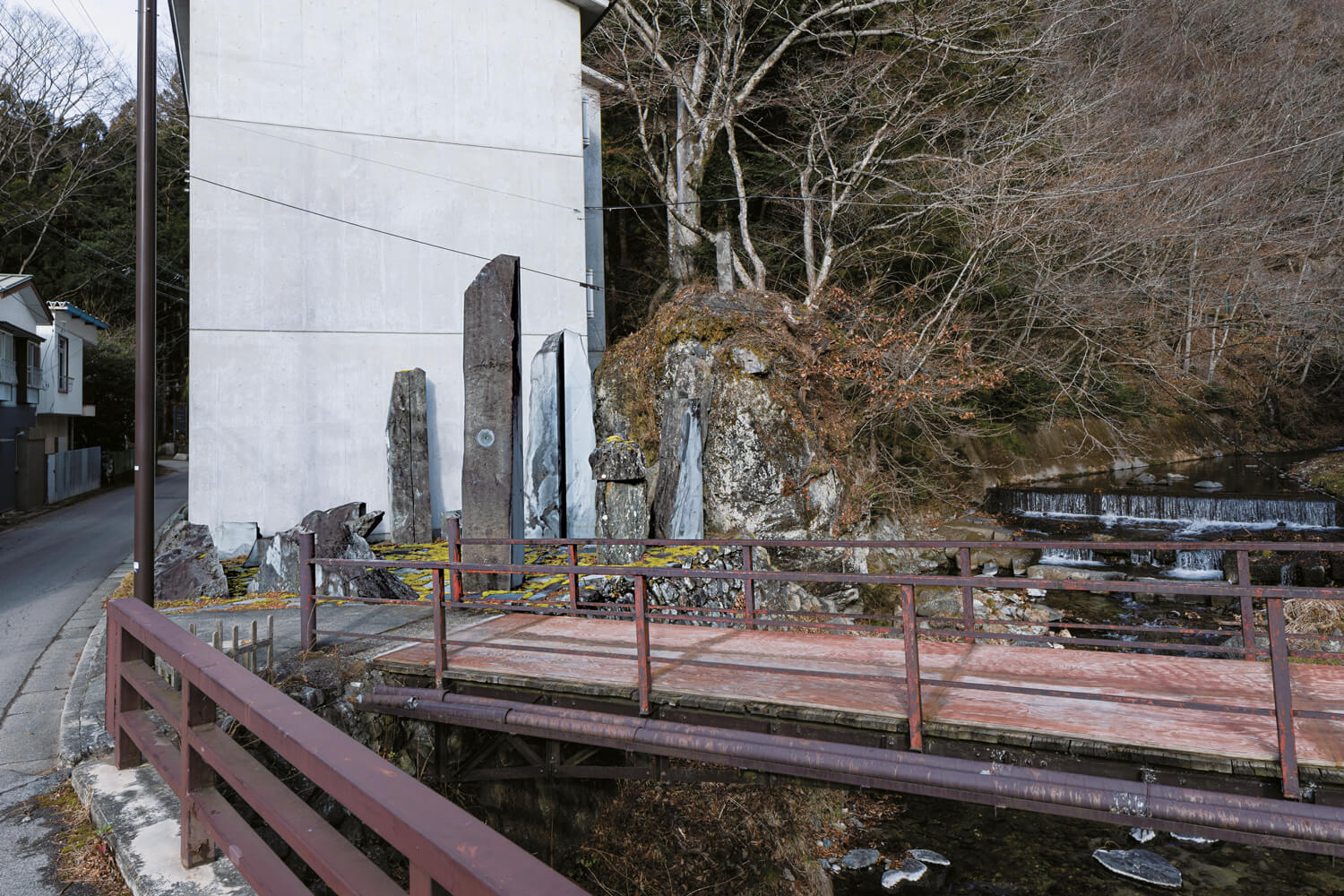
Suga Kishio’s artwork 'Aida no Aikei' is right in front of the east building, which is located on the north side of the main building. One can appreciate it while walking outdoors.
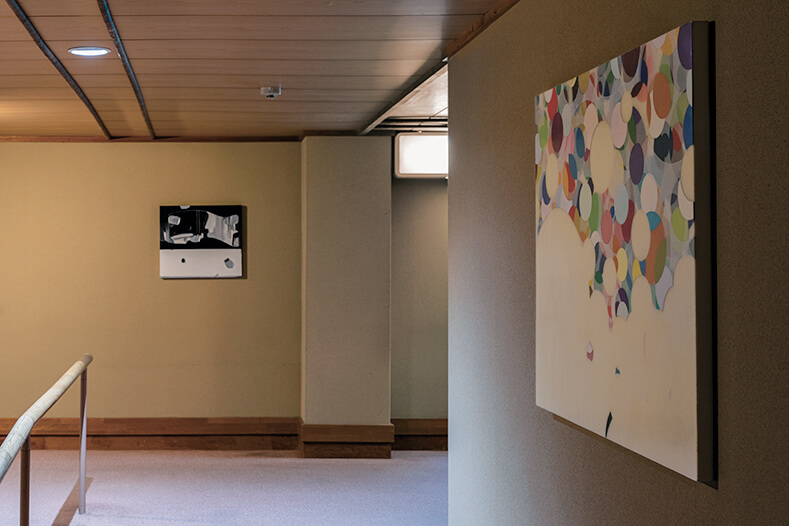
Artworks are also displayed in the hallway. On the right is a piece by Yuuki Yamamoto, who once won the grand prize in a public exhibition.
At Daikokuya, it is possible to purchase the artworks you appreciate and take a liking to. Artist exhibitions are held every month, and there are a lot of regular customers who come and stay for the purpose of visiting the exhibitions at the beginning of the month. In addition to supporting the winning artists through public exhibitions, Suga’s solo exhibitions have continued for 12 years since 2002, bolstering the artist’s reputation once more. Here, the ‘Warehouse Museum’ was born. Just a few minutes’ walk from the main building is a wide space that is similar to a warehouse, as the name suggests, and only the works of Mr. Suga are displayed. Lined up are those works produced from the 1980s to the present, with a level of quality that attracts art collectors from overseas.
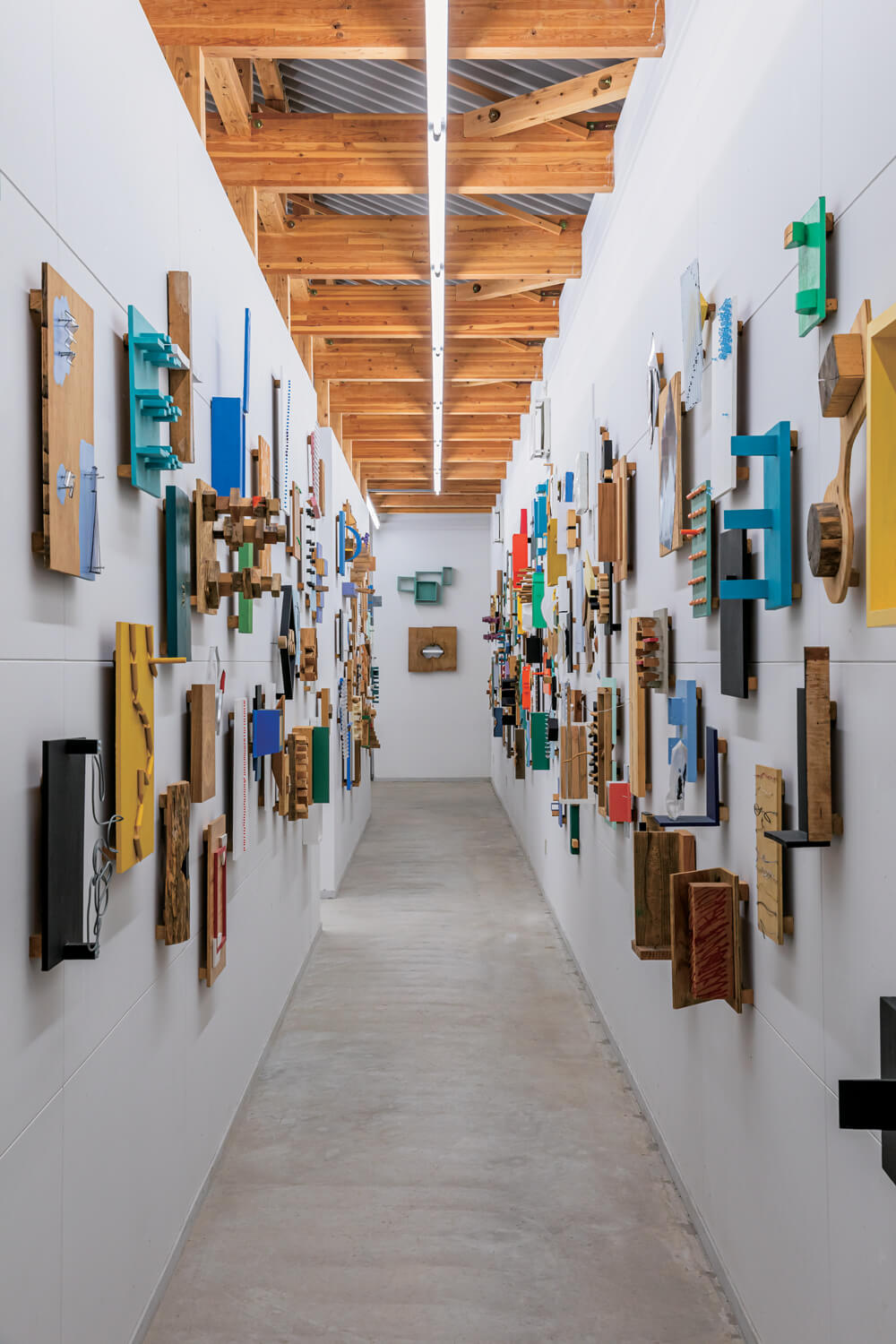
Warehouse Museum, which continuously displays the works of Suga only. Every morning at 10am, Mr. Muroi himself offers a guided tour of the artworks in places such as the garden.
Recently, the guests have become more interested in art, exchanging their impressions, and lively discussions – about what the art is expressing, or how a piece is best displayed at home – have been increasing.
The development that Daikokuya has continued for over 30 years now unfolds in Nasu. A 15-minute drive away is a landscape by architect Junya Ishigami, and an art space by contemporary artist, Nara Yoshitomo; an art journey while staying in the hot spring inn. The Mono-ha artworks will invite travellers on a journey of deep thought.
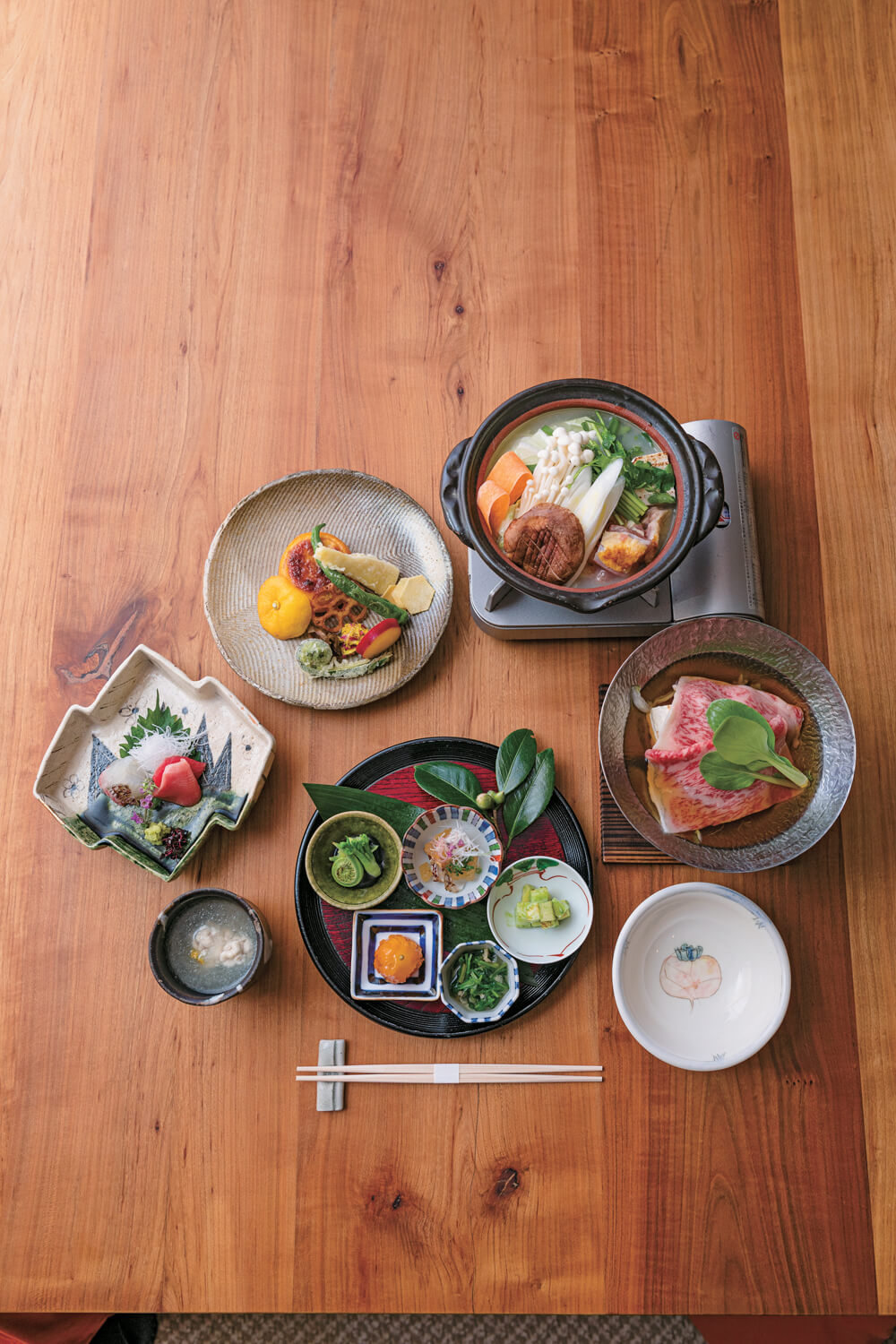
Having a history as a hot-spring health resort, nutritious food that is kind to the body is served. Plenty of local ingredients are used, and the connoisseur’s good taste also shines in the selection of serving dishes.
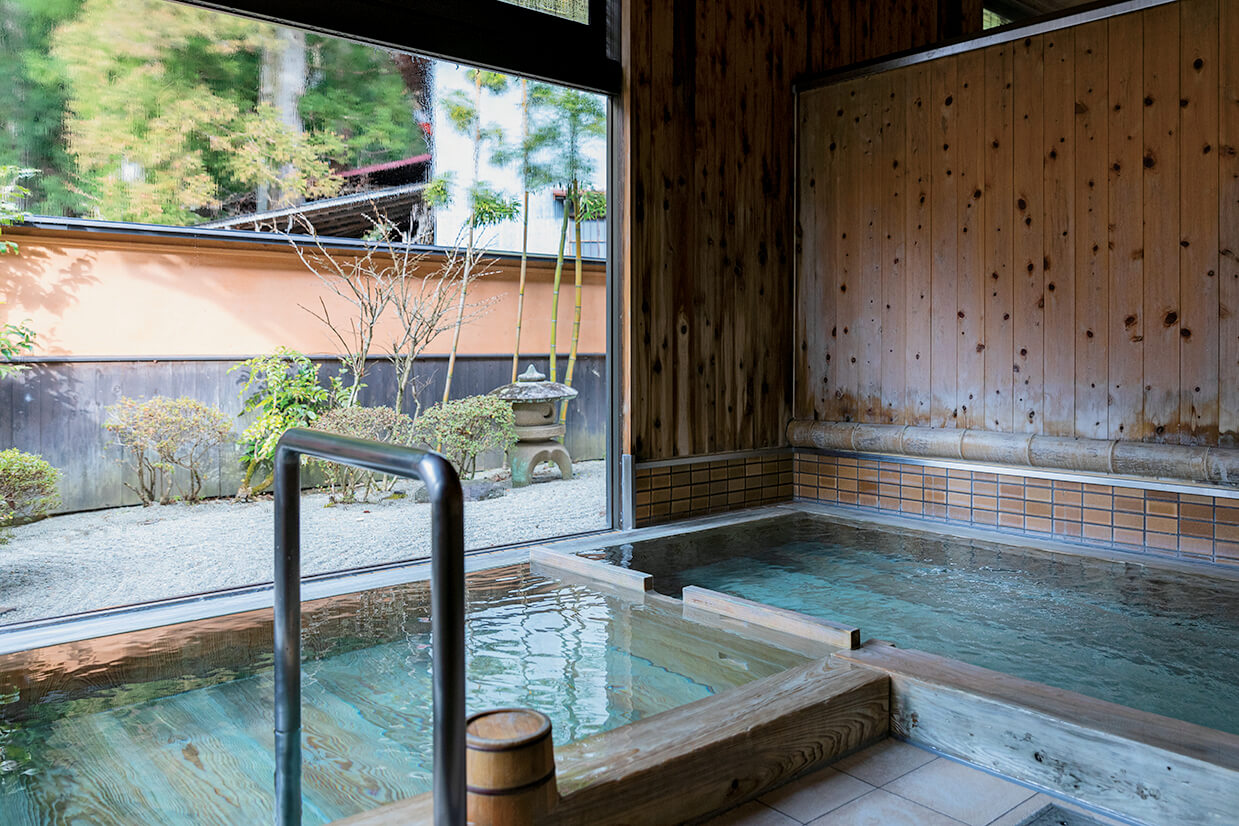
Itamuro Onsen has long been known for their medicated baths. In Daikokuya, 40℃ water, cooled to a lukewarm temperature, flows from the source. Aside from the indoor bath in the photo, there are also open-air baths. A low temperature sauna that uses yellow ochre from Korea is also available.
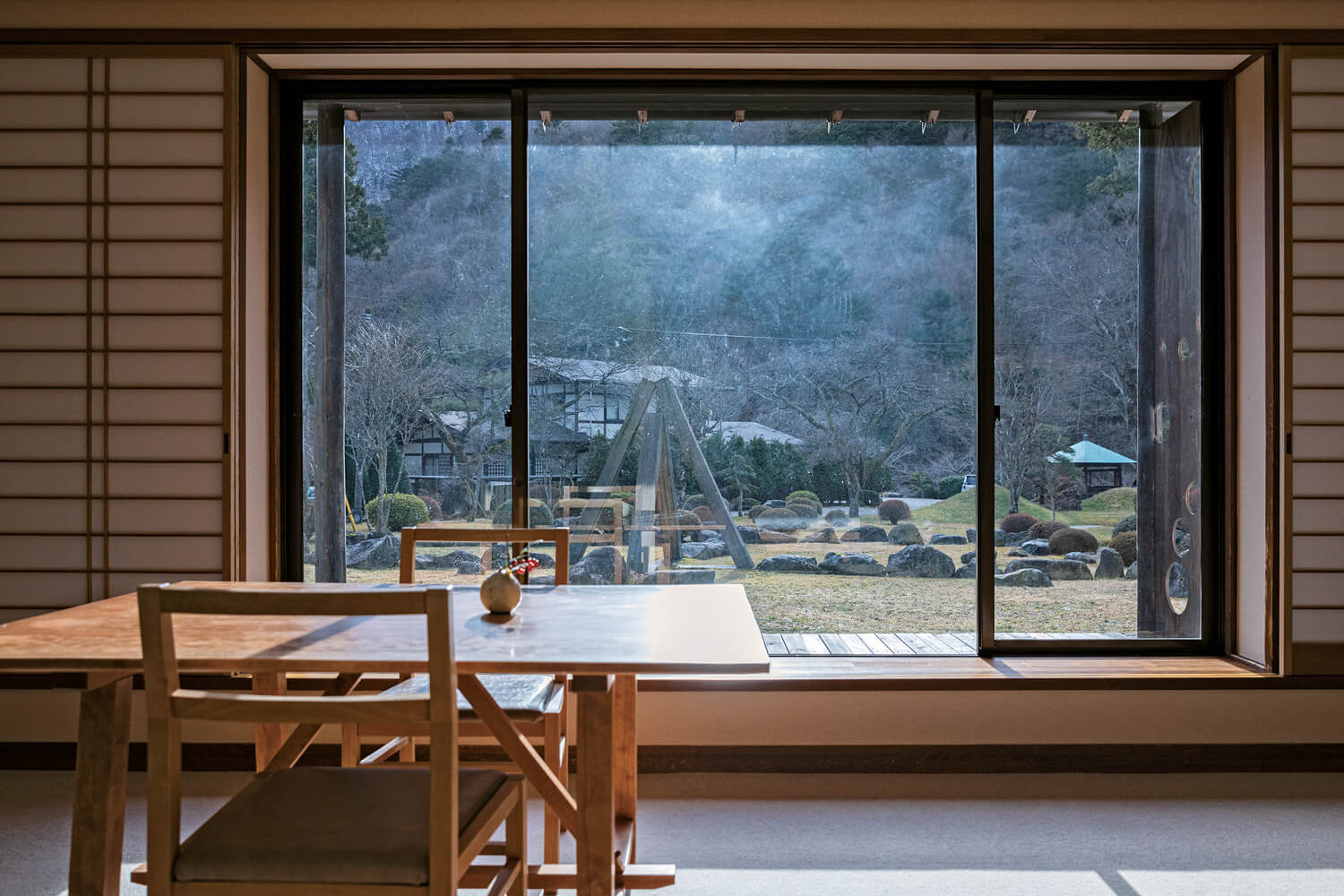
The Japanese-style 'Bamboo room' with a panoramic view of Suga’s work 'Ame no Tenkei', which is displayed in the garden in front of the building. Suga’s artworks can also be seen in the hallways inside the building.
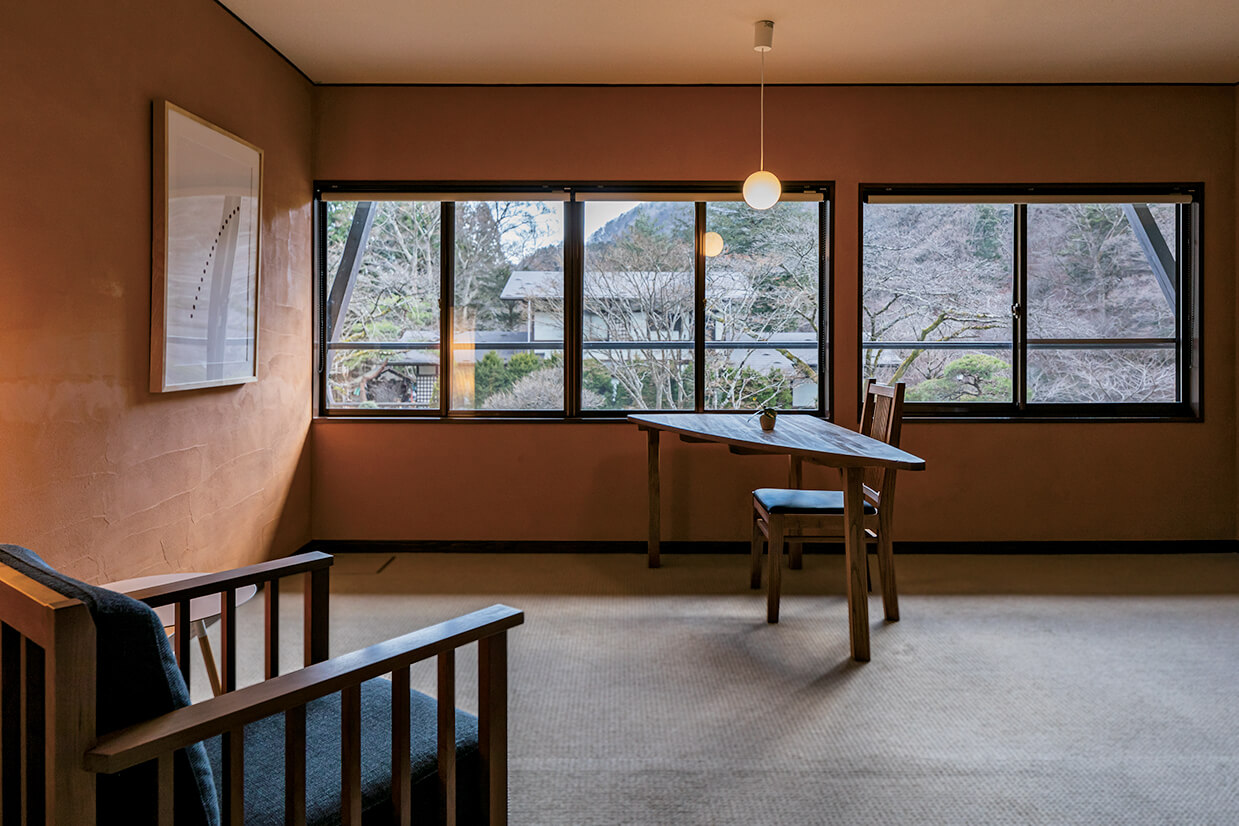
The single room, 'Pine room', which is perfectly suited for solo travellers. The views of the garden through the spacious room’s horizontal window are wonderful. In the guest rooms are different pieces of furniture made by woodworkers, and on the walls are artworks.
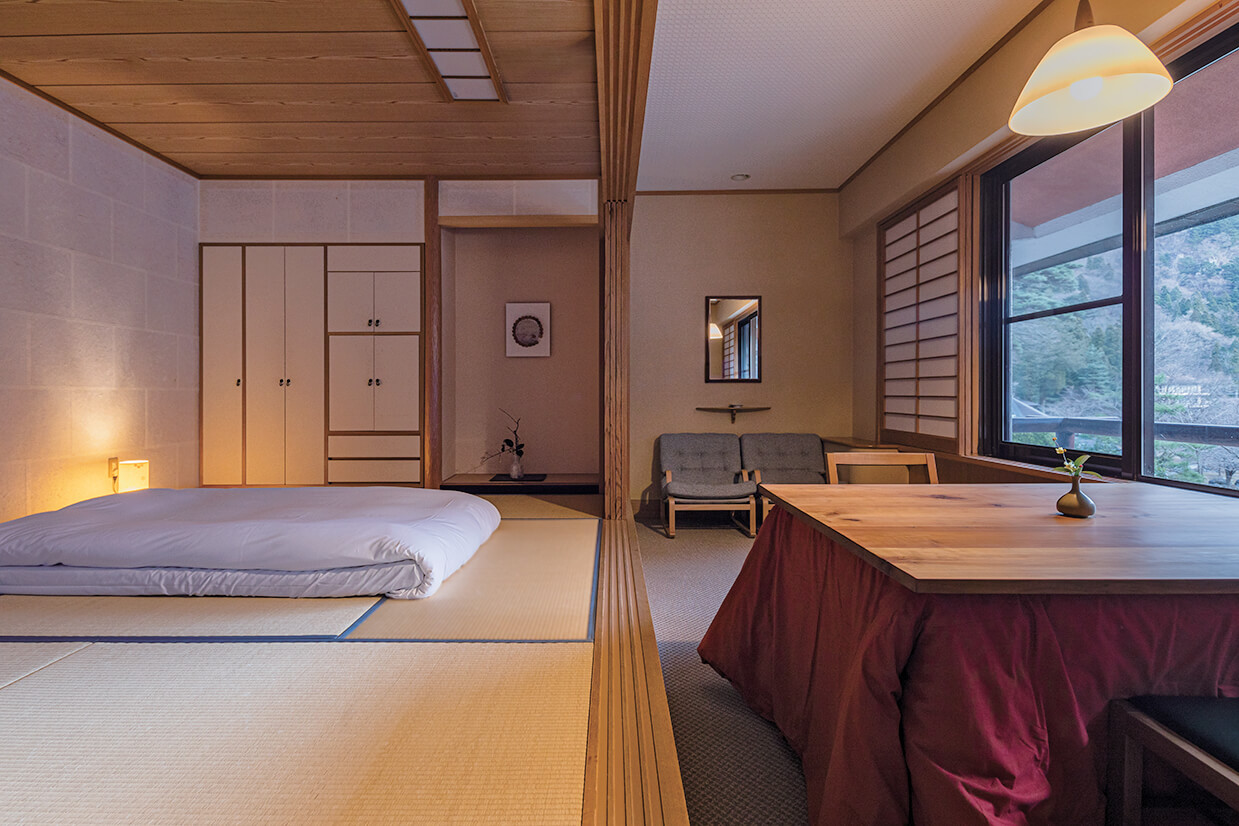
The Japanese-style room, 'Plum Room'. Outside of the busy season, it can also be used by a single person if there is an availability of guest rooms. Overlooking the Naka River, one can enjoy the cherry blossoms in spring, fireflies in summer, the changing colours of the leaves in autumn, and snowy landscapes in winter.
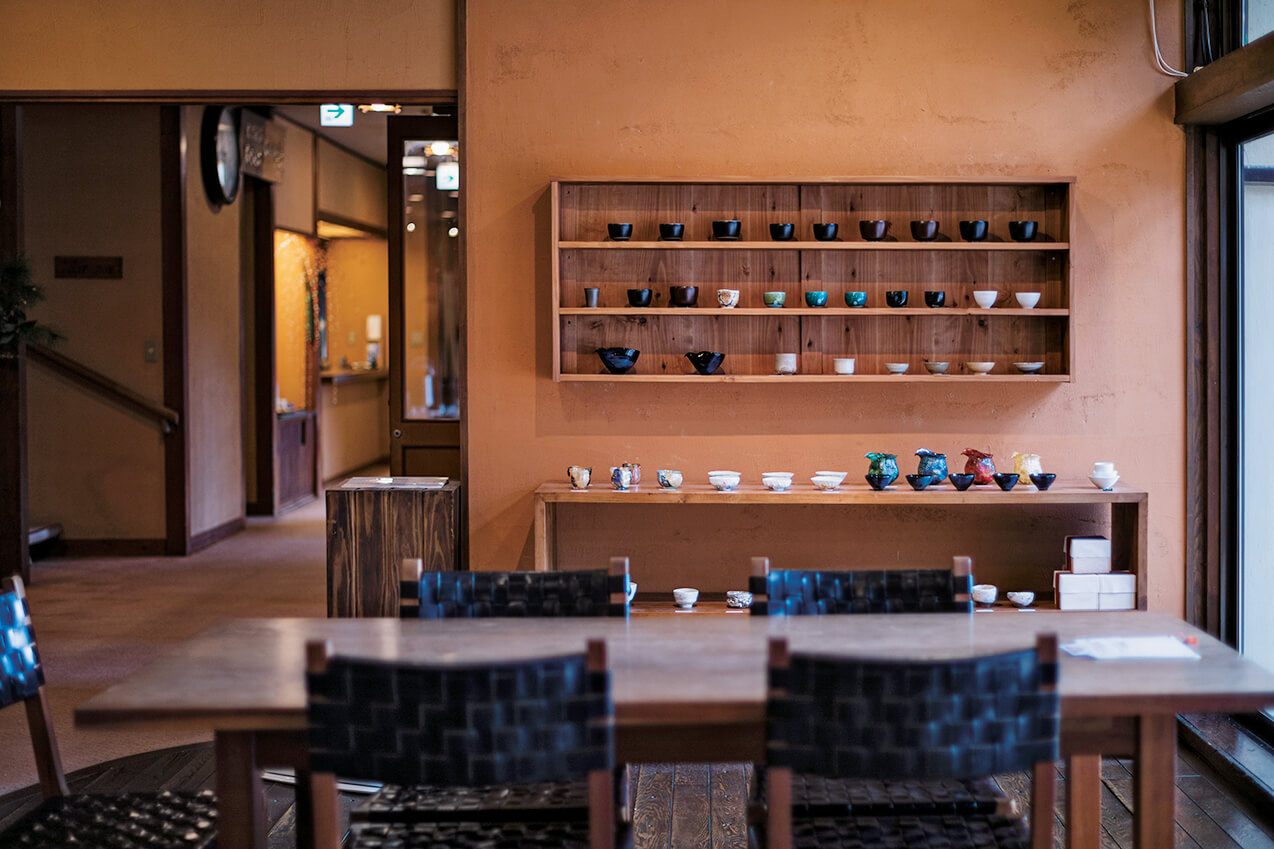
In the first-floor reception room flanking the entrance, artist exhibitions, among other events, are held. Although group exhibitions of serving dishes are held during press coverage events, for most of the year art pieces are on display and for sale. There are also many regulars who book to be there on the first day.
Itamuro Onsen Daikokuya
856 Itamuro, Nasushiobara, Tochigi
Tel: 0287 - 690 - 226
31 rooms in total
Pine room (Western room, Western-style single room, Japanese-style room) ¥19,000~, Bamboo room (Japanese-style room, Western-style room) ¥20,000~, Plum room (Japanese-style room, room with both Japanese and Western elements, Western-style room) ¥21,000~
※Excluding tax; dinner and breakfast are included
Access: 30 min by car from JR Nasushiobara Station
Paid pick-up/transfer taxi available (reservation required)
www.itamuro-daikokuya.comTRENDING
-
Hiroshi Nagai's Sun-Drenched Pop Paintings, an Ode to California
Through his colourful pieces, the painter transports viewers to the west coast of America as it was in the 1950s.

-
The Tattoos that Marked the Criminals of the Edo Period
Traditional tattoos were strong signifiers; murderers had head tattoos, while theft might result in an arm tattoo.

-
David Bowie Dressed by Kansai Yamamoto
The English singer was strongly influenced by 'kabuki' theatre and charged the Japanese designer with creating his costumes in the 1970s.

-
A Craft Practice Rooted in Okinawa’s Nature and Everyday Landscapes
Ai and Hiroyuki Tokeshi work with Okinawan wood, an exacting material, drawing on a local tradition of woodworking and lacquerware.

-
‘Seeing People My Age or Younger Succeed Makes Me Uneasy’
In ‘A Non-Conformist’s Guide to Surviving Society’, author Satoshi Ogawa shares his strategies for navigating everyday life.





